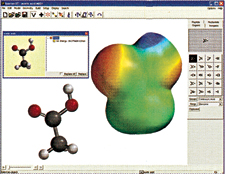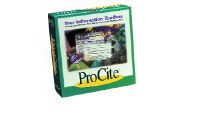Advertisement
Grab your lab coat. Let's get started
Welcome!
Welcome!
Create an account below to get 6 C&EN articles per month, receive newsletters and more - all free.
It seems this is your first time logging in online. Please enter the following information to continue.
As an ACS member you automatically get access to this site. All we need is few more details to create your reading experience.
Not you? Sign in with a different account.
Not you? Sign in with a different account.
ERROR 1
ERROR 1
ERROR 2
ERROR 2
ERROR 2
ERROR 2
ERROR 2
Password and Confirm password must match.
If you have an ACS member number, please enter it here so we can link this account to your membership. (optional)
ERROR 2
ACS values your privacy. By submitting your information, you are gaining access to C&EN and subscribing to our weekly newsletter. We use the information you provide to make your reading experience better, and we will never sell your data to third party members.
Policy
Digital Briefs
NEW SOFTWARE AND WEBSITES FOR THE CHEMICAL ENTERPRISE
by Janet Dodd
April 25, 2005
| A version of this story appeared in
Volume 83, Issue 17
The following products were on display at the exposition during the American Chemical Society's national meeting in San Diego. This is part 2; part 1 was published last month.
Software
Strike (statistical tools for revealing insight and knowledge) is a chemically aware statistical modeling package for chemists. It combines sophisticated analysis with an easy-to-use interface to visualize the structures and properties needed to derive quantitative structure-activity relationships (QSAR). Using a collection of chemical structures and associated properties, Strike applies one of several regression methods to derive a QSAR and return statistical measures of its accuracy and significance. The software features multiple regression methods, including partial least squares, principal-component analysis, and multiple linear regression. Strike is compatible with Linux and SGI IRIX systems. Schrödinger, www.schrodinger.com
SARvision 1.5 is a desktop application for medicinal chemistry structure-activity relationship (SAR) analysis, R-table generation, and data reporting. A chemical intelligence engine rapidly navigates through chemical structures, identifies relevant motifs, and interprets the data in terms of available biochemical data. SARvision creates SAR tables that can be exported to Word. The program orients portions of the molecules according to the researcher's instructions. Changing one scaffold changes all the molecules accordingly. The software runs on Windows ME, 2000, and XP. ChemDraw or ISIS/Draw are also needed. ChemApps, www.chemapps.com
MDL Isentris consists of four products: Base user interface, Core Interface, Direct chemical data cartridges for molecules and reactions, and Draw chemical drawing and rendering software. Base enables researchers to search, view, and manipulate chemical and biological data within and across workflows. Core Interface provides a set of services such as user access, database management, messaging, object storage, and other common tasks. Direct includes two chemistry data cartridges, one for molecule structure management, and the other for reaction management. Draw offers an all-purpose drawing tool that allows continuous drawing of bonds, pull-out rings of any size, and right-mouse click to add atom and query features. Elsevier MDL, www.mdl.com
Renaissance Library Studio provides an intuitive, graphical environment for the rapid specification of one, several, or hundreds of experiments. Chemicals, mixtures, and process parameters are defined and then combined in a natural recipe-style user interface to enable chemists to spend less time designing experiments and more time executing and interpreting results. New features for the Copernicus release of Library Studio include chemical structure visualization, storage, and integration with structure editors, as well as enhanced visualization of the experimental composition. Renaissance runs on Windows. Symyx, www.symyx.com
LabTrack is a software application that acts as a combined scientific word processor and a laboratory information management system (LIMS). It replaces paper lab notebooks. Its LabWise subroutine ensures that the rules of using a lab notebook are always followed. Once a page is saved, data cannot be deleted; users Line-Out the existing data and insert replacement data. Users can embed objects such as chemical drawings, photos, spreadsheets, and other graphics or files. The LabSafe Digital Notarization and Electronic Signature functions provide the legal proof needed for defending patents, submitting evidence to a court of law, and submitting documentation to FDA. EKM, www.ekmco.com
Databases
Vitic Version 2.0 is a searchable database of toxicological data with an interface that enables users to search on chemical structure or substructure, as well as on common substance identifiers such as CAS Registry Number and properties. The database is accessed via the Internet. The database offers a range of report output options in Excel format and the ability to accept input from industry-standard drawing packages such as ISIS/Draw. Version 2.0 includes more than 3,000 chemical structures, which have been updated to include full stereochemical designations. Also, more than 60,000 data records are linked to their source information. It is compatible with Windows XP, NT, and 2000. Lhasa, www.lhasalimited.org
Known Drugs is a database of more than 13,000 drugs and their therapeutic categories. It is structure-searchable and includes information on clinical trials, patents, and approval status. Toxicity is a database of more than 160,000 chemical structures with toxicity data from many sources, such as the National Toxicology Program, the Registry of Toxic Effects on Chemical Substances, and the FDA's Priority-Based Assessment of Food Additives (PAFA) database. It is searchable by type of study, toxic effect, species, sex, dosage, duration, and route of exposure, as well as by structure. The databases require Leadscope Enterprise software. Leadscope, www.leadscope.com
COMPUTER-BASED TRAINING PROGRAMS
Academy Savant produces computer-based, video, and slide or tape training programs that help industrial and academic users teach technical concepts to their employees, customers, sales personnel, and students. The programs cover a broad range of chemical laboratory skills, including high-performance liquid, gas, and ion chromatography; atomic absorption and plasma techniques; and infrared, ultraviolet, NMR, and mass spectrometry. www.academysavant.com
Digital Briefs is written by






Join the conversation
Contact the reporter
Submit a Letter to the Editor for publication
Engage with us on Twitter